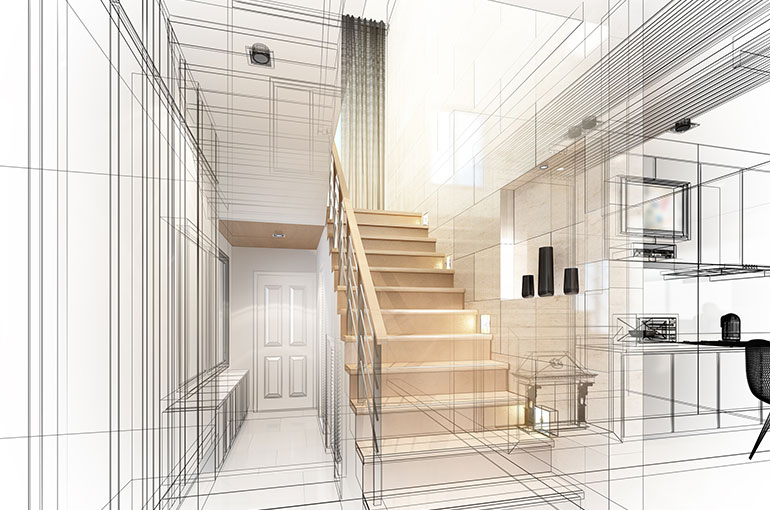The Influence of Technological Innovations on the Design Practices of Contemporary Architects
The rapid evolution of technological tools has considerably reshaped the design landscape for contemporary engineers, cultivating extraordinary degrees of technology and sustainability. Discovering these characteristics reveals a nuanced interplay between technology and traditional design methodologies, motivating a more detailed examination of what the future holds for building methods.
Development of Architectural Equipment
How have building devices transformed the layout and building procedures over the centuries? The evolution of building devices has dramatically affected the performance, accuracy, and creative thinking of design and building.
With the arrival of the Renaissance, the introduction of the compass and the protractor noted a pivotal shift. These devices enabled designers to achieve greater precision in their layouts, assisting in the emergence of more detailed and in proportion structures. The Industrial Change further reinvented architectural exercise with the introduction of mechanical devices and materials, enabling bigger and more ambitious projects.
In the 20th century, the growth of computer-aided layout (CAD) software program changed the landscape as soon as again, offering architects with unprecedented abilities in modeling and visualization. Today, advanced devices such as Building Details Modeling (BIM) and parametric layout software proceed to push the limits of building technology, allowing an extra integrated technique to design and building processes.
Enhanced Partnership in Design
As modern technology remains to progress, boosted collaboration in style has actually become a cornerstone of contemporary architectural method. The integration of digital tools such as Building Information Modeling (BIM), cloud-based platforms, and progressed visualization software program has actually transformed the method engineers, designers, and stakeholders interact throughout the style process. These devices facilitate real-time communication, enabling groups to share concepts, modifications, and feedback instantly, despite geographical location.

Furthermore, interdisciplinary partnership has actually been structured with these technical innovations, enabling architects to work more closely with other experts, such as metropolitan coordinators and environmental experts. The outcome is a much more cohesive technique to make that considers various perspectives and experience. Inevitably, boosted partnership in style is not simply a pattern; it is vital for creating ingenious, functional, and aesthetically pleasing design in a significantly intricate globe.
Sustainability Through Technology
Sustainability in design has increasingly ended up being intertwined with technical advancement, driving the market toward environmentally liable methods - cda architects. Contemporary architects are leveraging innovative technologies to decrease environmental influence while improving the efficiency of buildings. One famous example is using Building Details Modeling (BIM), which enables for specific planning and source allowance, minimizing waste during construction and advertising power performance throughout a building's lifecycle
Additionally, smart products and energy-efficient systems are being integrated right into designs to enhance resource use. Technologies such as solar batteries and eco-friendly roof harness renewable energy sources, adding to minimized carbon impacts. Additionally, the application of man-made knowledge in layout procedures enables architects to mimic and analyze power intake, assisting choices toward more sustainable results.
The assimilation of sustainable innovations not just aligns with worldwide ecological objectives but likewise meets a raising demand from customers for environmentally friendly solutions. As designers accept these advancements, the emphasis moves towards creating rooms that are not just visually pleasing but additionally functionally lasting, thus redefining the standards of modern style. By doing this, innovation serves as a catalyst for sustainability, making it possible for engineers to create buildings that respect and boost the native environment.
Challenges in Execution
While technical improvements in architecture hold fantastic guarantee for boosting sustainability, their execution frequently encounters considerable difficulties - cda architects. One primary barrier is the high discovering contour connected with brand-new innovations. Designers reference and building experts may call for considerable training to successfully use advanced software program and tools, which can postpone project timelines and increase prices
Furthermore, the combination of arising innovations, such as Building Info Modeling (BIM) and sustainable products, frequently necessitates collaboration throughout multidisciplinary teams. This cooperation can be hindered by differences in know-how, workflows, and communication styles, bring about prospective problems and ineffectiveness.
Financial restraints even more complicate the adoption of cutting-edge technologies. Numerous building companies, specifically smaller ones, may lack the resources to spend in cutting-edge tools, limiting their capability to compete with bigger firms that can pay for such financial investments.
Furthermore, regulative frameworks and structure codes might not equal technological developments, producing uncertainty and prospective compliance problems. This obstacle can inhibit engineers from fully welcoming brand-new modern technologies, as the risk of non-compliance might outweigh the benefits. Resolving these application obstacles is critical for the successful integration of technological improvements in contemporary architectural techniques.
Future Patterns in Style
The obstacles linked with the execution of new technologies in style have prompted a reevaluation of future patterns within the industry. As engineers navigate concerns such as sustainability, urbanization, and social equity, they are increasingly taking on ingenious modern technologies to enhance layout effectiveness and ecological performance.
One noticeable pattern is the assimilation of expert system (AI) in the style procedure. AI tools can examine vast datasets to notify layout decisions, improving both creativity and performance. In A Similar Way, Building Details Modeling (BIM) continues to progress, enabling real-time partnership amongst stakeholders find and assisting in streamlined job management.
Lasting layout methods are also getting momentum, with designers concentrating on adaptive reuse and regenerative style principles that lessen resource consumption and waste. The unification of wise products and renewable resource sources will better enhance the durability of structures despite climate adjustment.

Final Thought
Technical advancements have considerably reshaped architectural style methods, assisting in boosted accuracy, cooperation, and sustainability. The assimilation of devices such as Structure Info Modeling and parametric style software program, along with artificial knowledge and clever products, equips designers to deal with complicated difficulties much more efficiently.